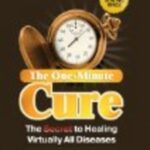Three basic parts constitute the red fluid we know as blood. They are white blood cells, red blood cells and plasma. Plasma, of which there is about one gallon in the human body, is the salty, straw-colored fluid that white and red blood cells, various nutrients, oxygen and hormones are transported in while on their way to the glands, organs and other body parts. Red blood cells are tiny: it takes 3000 placed end to end, of the approximately 24 billion in the human body, to measure an inch across. White blood cells are about 1/1000th as numerous as red cells.
White cells are in the blood to protect us against bacteria and other invaders. If the white cell count is lower than normal (4.0 to 10.5 X10-3/ul) we may experience more illnesses, colds and flu. This is not always an indicator of possible problems if the body has the ability to rapidly manufacture white cells in response to invaders. The rapid response is an indicator of a strong immune function. If we continually bombard our immune system with poor lifestyle and food choices, we’re courting trouble. When the immune system is constantly on alert, even though the white cell count is in or above the normal range, our resistance to illness and disease can remain low. When white cells become to numerous, the results can be leukemia or other blood related diseases like Hodgkin’s or non-Hodgkin’s lymphoma.
Think of the body as you would a large port city. The main supplies, food and oxygen, come in to port: the mouth and lungs. After being broken down into smaller units, they’re transported to various distribution centers via canals and smaller boats: the blood stream and blood cells.
Red blood cells are the bloods’ main player. A red blood cell looks like a donut without a hole. The outer sponge-like ring is thicker, tapering toward the center. Hemoglobin is the carrier of iron and oxygen to the cells. Hemoglobin is in the outer ring. Hemoglobin is what gives the arterial blood its red color. If the blood is deficient in iron and oxygen, the arterial blood is more bluish colored. This can often be seen as a bluish/white tint in the white of the eye. Hemoglobin does more than carry oxygen to the cells; it also attaches to wastes and carbon dioxide at the cellular level and transports them, via the red blood cell and veins, to the lungs and other body parts responsible for elimination. Venous blood is more bluish than arterial blood because the oxygen and iron have been deposited in the cells. Anemia, of which there are two types, is the result of low iron. Iron poor blood type, the most common, is relatively easy to treat with rest and proper diet. Pernicious anemia is much more serious and difficult to remedy.
Red cells are manufactured in the bone marrow as needed. Once red cells are manufactured and out of the bone marrow they’re no longer a living cell. Even though they’re the carriers of oxygen and iron they don’t consume an appreciable amount. Red blood cells are much like an unconcerned, temperamental boat driver. Red cells want to get paid adequately and proper food is their pay. If they don’t like what we feed them, they refuse to do their job.
The red cells, which have a life expectancy of 30 to 90 days, go about their job with complete disregard for the rest of the organism. They have no interest in making certain the cells receive the nutrients carried in their little round boats, and if no new red cells are manufactured to take their place, it’s no concern of theirs. If the owner of the body doesn’t care, and the blood becomes anemic, it’s none of their business. Bottom line as far as the red blood cells are concerned? It’s the responsibility of the owner of the port city to make sure everyone gets sufficient and suitable pay and do the proper maintenance.




